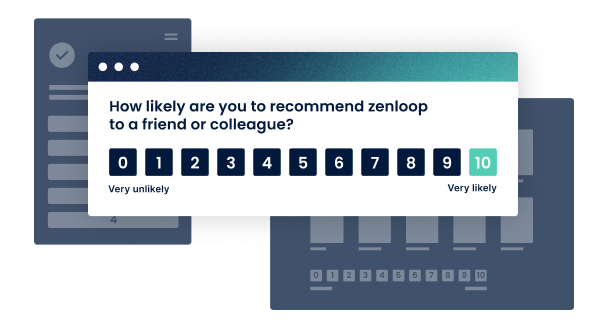
Saturday morning, the ideal time to look for some new furniture. As you turn into the parking lot in front of the large local furniture store, you see many colorful tents in a cordoned-off area – that’s the store holding a small fair and circus, especially for its best customers. At this point, some would shake their heads and ask why a company is organizing such a thing.
Clever strategists, on the other hand, know immediately: the company offers a little extra to retain its customers. The topic of customer retention not only plays a major role in marketing, but it also affects the entire business – from interns to sales and marketing right up to management on high. Customer retention is therefore a measure that is practiced by the entire company in order to retain buyers for the long-term.
It doesn’t matter what services or products are offered, because every company and every industry, whether retail, sales or service, benefits from customer retention – if they are positively transferred and integrated by management to follow the mission statement of the company. We explain exactly what this means, what customer retention is, and what types are available in the following sections.
What Does Customer Retention Mean?
There is certainly a need for an explanation at this point because some will nod, others will shake their heads and say: “Customer retention? Doesn’t the customer get to decide that?”. There is a small logical error behind this idea: Customer retention happens on the business side, while customer loyalty or loyalty happens on the customer side. Customer retention is closely linked to customer satisfaction.
These are the two issues that require a good bond towards your customers. But customer retention as a buzzword in marketing revolves around the entrepreneurial strategies needed and applied to win customer retention. The goal: to make the customer’s relationship with the provider positive, consolidate it long-term, stabilize, and expand it.
Therefore, customer retention is part of customer relationship management (CRM). CRM is aimed at the existing customer base with the aim of maintaining these relationships and preventing a change of provider.
It should already be clear here that this is not a one-off effort, but that driving customer retention is an ongoing process that can achieve not just success. This is because a company can never please everyone and because expectations of buyers as a basis of customer satisfaction can sometimes contradict each other.
But this is no reason to reject the whole concept of customer retention. It is only necessary that a company realizes several points in advance: this includes the target clientele, i.e. the desired clientele must be defined so that one can concentrate on their wishes and expectations.
In order to clarify this definition, some background knowledge is required. But here you don’t have to look long, simply read up on our collective knowledge about the keywords customer focus, customer centering, and customer journey and use touchpoint analysis in order to quickly close any gaps in your knowledge.
Ready? Then we can move on to the question of what types of customer retention actually exist.
Five Types of Customer Retention
Not all types of customer retention are equal. The division of the different types is often not rigid and the boundaries fluid. In most cases, there is a combination of different types that a company uses to retain its customers.
In general, customer retention can be divided into habitual, routine, voluntary, and involuntary. If you want to make the distinction a little clearer, you choose the following five characteristics, proposed by the German Institute for Marketing:
- Situational Binding
Spatially or temporally, here the provider has the monopoly. The buyer is forced to shop here, as there is no other offer nearby. - Legally Binding
There is a contract between the company and the customer to ensure that the buyer remains. - Technical Binding
The customer uses a specific technical system or software and is therefore dependent on the provider for extensions, maintenance, and the like. - Economic Ties
Is based on penalties and other costs that the customer has to pay if he wishes to switch to the competition, or on payments already made to a provider, which gives the buyer certain advantages. - Emotional Bonding
This is a voluntary bond from the customer’s point of view, which is created by satisfaction and is based on trust. This makes this binding particularly valuable, but the customer can also withdraw it at any time.
Companies understandably like to seek firm ties with customers – if necessary, even with negative measures or deterrence, such as barriers to change. However, one thing is clear: it is more sustainable to rely on positive strategies than on negative ones. After all, the customer should not be forcibly chained to anyone.
If you involuntarily bind customers to your company, they will flee to the competition at the first opportunity – and such emigrants are hard to win back, no matter how good your own Retention Marketing is.
The following paragraph explains why customer retention is so important for a business and what makes it an almost indispensable market advantage in this day and age.
This Is What Makes Customer Retention so Important
It should be clear to everyone that the market is changing rapidly as technology progresses, opening up new opportunities and therefore constantly putting existing strategies under scrutiny. After all, those who rely only on concepts from previous years are quickly in danger of falling behind with outdated methods.
The potential buyer in 2019 now has access to offers from all over the world via their smartphone, tablet, and other devices. He doesn’t need to wait weeks for a specific delivery at the store around the corner. With a click, the product will be delivered directly to the front door by the shipping company tomorrow.
This abundance of supply does not satisfy buyers but rather increases hunger for even more consumption. Often seconds decide whether a customer wants to stay on the online platform. Pixelated images and outdated technical systems that let a page load for a long time? A no-go for today’s users.
All this and more makes customer retention a very important tool in a company’s toolbox. Because attracting new customers is usually a way of attracting customers from the competition, it requires large resources of time and money. The yield value of a buyer on the first purchase is still relatively low. Only after repeated shopping does a company generate profit. All this makes the mere acquisition of new customers economically unprofitable.
On the other hand, regular customers are economically small cash cows: They trust the company and therefore accept price increases, as they like to opt for familiar services and well-known products. On top of this, they shop more regularly, and more often, they buy more and actively recommend the company to others. All of this boosts a company’s revenue and shows why regular customers are so valuable.
In order to keep these regular customers, the company can use various customer retention measures. We are now presenting some tried and tested approaches.
Five Measures to Retain Customers for the Long-term
Since voluntary customer retention is more sustainable and better for both, customers and the company, we only present measures that boost this type. Firstly, two basic retention programs steps that do not only concern customer service:
1. Classical Measures
- Debit card
- Customer Club
- Magazine
- Coupons
- Discounts
- Bonus programs
- Gifts as a thank you
2. Communicative Measures
- A permanent contact partner for every customer
- Complaint management
- Modern online presence and a user-friendly website
- Openness and honesty, including admitting mistakes
- Conveying authenticity
If you master these basics, you should build on this solid basis with the following three points:
3. Imparting Empathy
- Create a feel-good atmosphere in branches
- Use name tags
- Send greeting cards by post
4. Offer Comprehensive Service
- Benefits for regular customers
- Exclusive offers to selected regular customers
- Send early announcements for discounts, etc.
5. That Certain Something Extra
- Impart expertise, for example in workshops or as informative and readable content cross-medial on portals
- Host company-related events for regular customers
- Start co-operations with related companies
Basically, you have to be willing to invest a lot of resources in these strategies. Only if these concepts are well thought out, align with the defined target clientele and offer real added value and are credible for the customers and correspond to the company’s image, will they also be crowned with success.
Such a strategy does not, of course, simply grow overnight, but requires long-term planning that will occupy all departments, especially marketing, sales, and management. As a goal and concept, customer retention must determine the guiding principle throughout the entire business.
All these points are intended to strengthen customer retention in the company. But how do you check whether you can achieve the desired effect at all? Key figures such as the well-known Net Promoter Score®, which calculates customer satisfaction, help. We will now show you exactly how this can be done.
How to Use the Net Promoter Score Effectively
If you only shrug your shoulders when hearing the term Net Promoter Score you should read Net Promoter Score: Calculation and Interpretation on our blog to get the necessary background information in advance. Here we show how the Net Promoter Score can be specifically used to test customer retention strategies.
Most strategies, such as events, take place at precisely specific times, allowing you to directly interview the participating customers in a tight time window after the promotion. This survey is best done online, with many using a simple and proven tool: e-mail.
At some events, such as workshops or parties where customers are on-site (and it is possible to address them briefly without much distraction), it is also possible to carry out the survey directly on-site via mobile devices. An advantage of this method: Immediately afterward, you can personally hand over a small thank you to the customer in the form of a small giveaway.
Thanks to the Net Promoter Score the survey is very clear, practical, and quick for the customer to complete. This is because it consists of exactly one question:
How likely is it that you will recommend our company/website to a friend or colleague?
The answer doesn’t even have to be written, it can be entered on a scale. The scale ranges from 0 (very unlikely) to 10 (very likely).
Some may now be wondering what this question has to do with customer retention. The reason lies in the emotional meta-level: Customers only recommend companies, brands, and products to people they like if they are personally convinced of them. This conviction only comes if such products or services have met or exceeded their own expectations, i.e. the customer is very satisfied. Customer satisfaction is a factor for customer retention because very satisfied customers who recommend a company feel emotionally connected to it.

Anyone can relate to this, for example by asking themselves which company they would recommend with complete conviction. The answer is almost certain to be a company that you like yourself, whose products you happily buy and to which you feel connected, right? This is what most others do, making the Net Promoter Score metric one of the most important metrics that a company can collect. This value reflects the current state of customer satisfaction. But beware: It really only shows the current state of play, and it can change at any time. Therefore, you have to record and calculate the Net Promoter Score regularly.
By the way: Another advantage of the Net Promoter Score is in the feedback box, which customers can fill in in writing. This field is a gold mine for companies that want to continuously optimize themselves and attract more customers.
Forever and Eternal
“Look before you leap”. Nowadays, every customer can quickly and easily check whether a much-loved company really delivers what it promises. That’s why authenticity is one of the most important instruments you can use to gain the trust of customers. Only credible companies and brands appear trustworthy and gain the loyalty of their customers. This retention and the trust that goes with it are necessary to strengthen customer attachment and secure it in the long term.
Entrepreneurs should get an idea of how to implement customer retention and which prerequisites are necessary. No cost and effort should be spared because if everyone pulls together, the company is credible and can successfully implement concepts for regular customers which correspond to its own mission statement. This turns into a unique selling point that sets the company apart from the competition.
customer retention can be checked on the basis of the willingness to recommend with the Net Promoter Score KPI. The company is able to optimize the strategies for customer retention in such a prepared manner.
After all, customer retention, the tying of regular customers to the company, and the gain of their long-term retention and extra sales can make all the economic difference in today’s competitive market. And of course, one thing is clear: regular customers are an asset for every business!
Tags: Customer Retention






